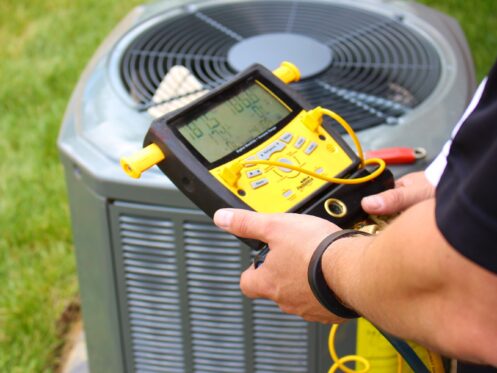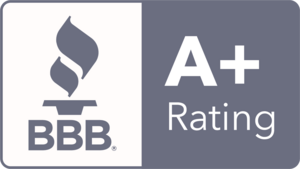When it comes to fixing the air conditioner in your El Paso, TX home, you should always hire a licensed HVAC company. However, when minor problems arise, there are several steps you can take to optimize operating conditions and potentially resolve them. Explore these six DIY troubleshooting tips for resolving common AC issues.
1. Inspect and Replace Your Air Filter
Dirty, ill-fitting, and improperly installed air filters lie at the heart of many AC problems. If your air conditioner is blowing out warm air, failing to regulate humidity, making loud sounds, or rapidly cycling on and off, check its air filter. You’ll find the air filter in the air handler or behind the return air vent.
Air filters with heavy debris buildup can inhibit airflow throughout cooling systems. A simple way to prevent filter-related AC issues is to set a monthly reminder to check your filter. Standard filters typically last between one and three months. If you haven’t changed your air conditioner’s filter in 90 days or longer, this could be the cause of the issue. If you have questions about the correct filter size, rating, or position for your HVAC system, our technicians can answer them during your next repair or AC maintenance appointment.
2. Clean Around the AC Condenser
Dirty air filters block the flow of warm, indoor air into air conditioners. After extracting the heat from indoor air, air conditioners funnel heat outside. They release this heat via their condenser/compressor units in the back or side yards.
When dense shrubs and other heavy foliage grow too close to your outdoor condenser, heat release suffers. This causes air conditioners to overheat, short-cycle, or shut down. If your AC is exhibiting any of these symptoms, ensure that its condenser has at least 24 inches of clearance all around. After clearing the condenser’s perimeter, let your AC rest for 20 to 30 minutes before turning it back on. This will give the unit ample time to cool down.
3. Remove Air Vent Blockages
Take a look at the HVAC air vents throughout your home. Like air filters, air vents can develop heavy build-up of lint-like debris. You can wipe these buildups off with a damp cloth. You can even unscrew vent covers and carefully vacuum behind them.
You should also make sure that none of the vents throughout your home are completely closed. Closed vents disrupt airflow in ducting and cause a rise in in-duct static pressure. As airflow declines, air conditioners can experience short cycling or overheating. They can also ice over and cause a rise in indoor humidity.
4. Check Your Thermostat’s Setting
Your problem could be as simple as an incorrect thermostat setting. With multiple people in your home, there’s always the possibility that someone has adjusted your thermostat to an extreme setting or otherwise altered its settings. For your air conditioner to circulate cold air, your thermostat setting must be lower than the current temperature of your home.
Ensure that your thermostat is set to “AUTO” instead of “ON”. On “AUTO”, your indoor air handler’s blower fan will activate during each of your air conditioner’s cooling cycles. When the thermostat is set to “ON” instead, the blower fan will run continuously, and your AC won’t kick into action. This may be the case if you hear your HVAC system running but aren’t getting any cool air from your HVAC air vents.
5. Reset Your Air Conditioner’s Circuit Breaker
If your thermostat has the correct settings but your air conditioner still won’t turn on, check and reset its circuit breaker as needed. Your AC might trip its circuit breaker due to temporary electrical faults or major power surges. However, if the circuit breaker trips again shortly after your AC starts running, you may have a serious electrical issue that requires professional attention.
6. Know When to Schedule Professional AC Repairs
There’s a big difference between troubleshooting your AC and fixing it. While troubleshooting is any activity that optimizes operating conditions, repairing an air conditioner can involve removing and replacing parts, opening the motor housing, and tampering with moving components. These and other actions can instantly void your AC manufacturer’s warranty.
While almost anyone can safely and successfully troubleshoot an air conditioner, attempting repairs without model-specific training can worsen existing problems and lead to higher repair costs. It can also create major safety hazards. You should schedule professional AC repairs whenever the tips above don’t result in immediate and noticeable improvements in AC performance.
Since 2010, we’ve proudly served homeowners in El Paso with expert AC repair, maintenance, and replacement services. We also offer thermostat and ductless AC services. If you have AC problems that basic troubleshooting can’t resolve, contact SoBellas Home Services now.

